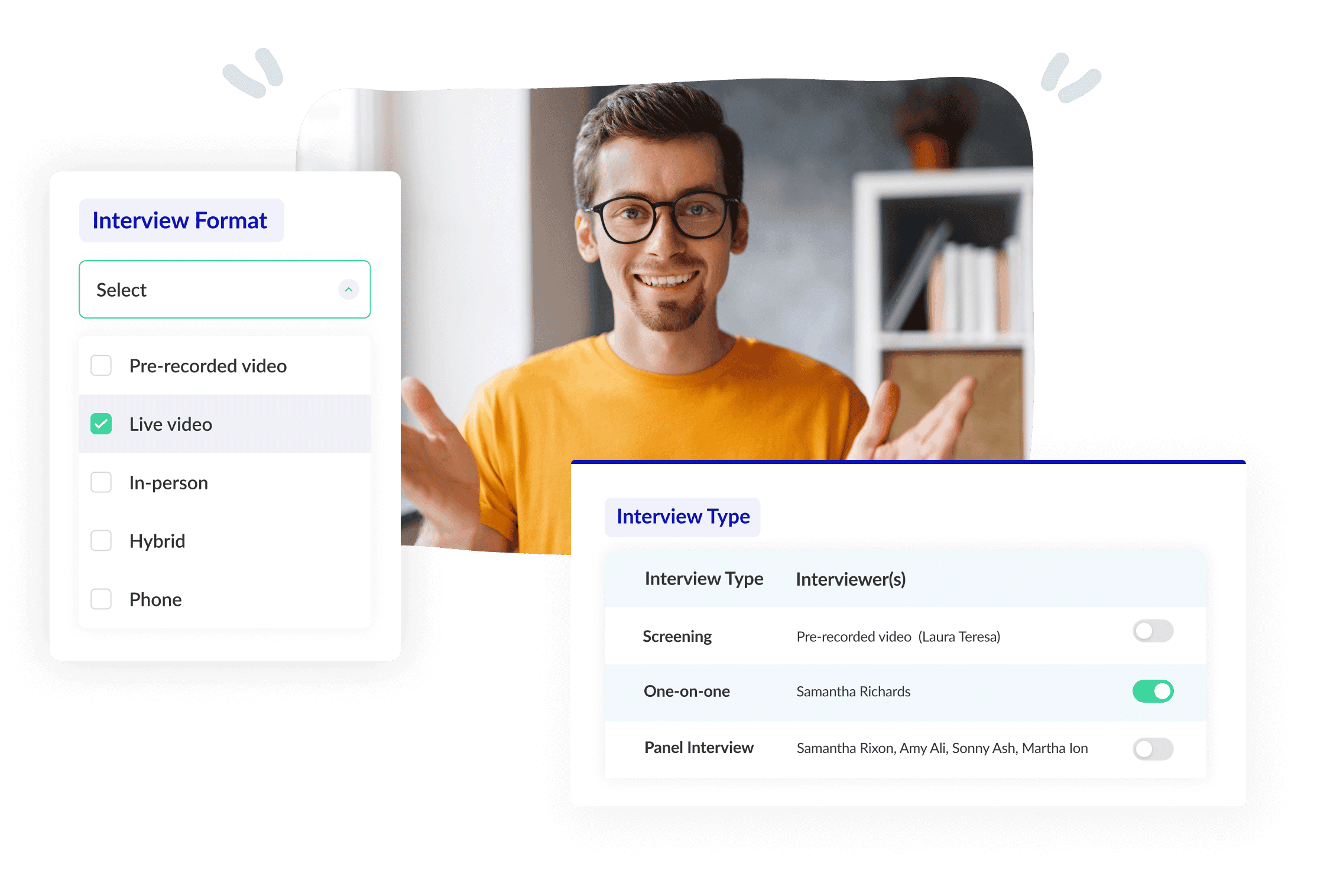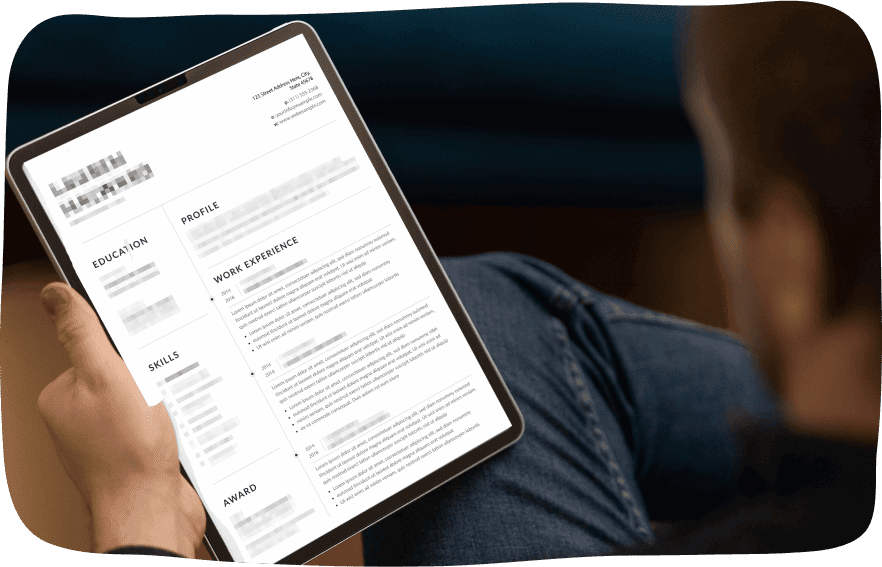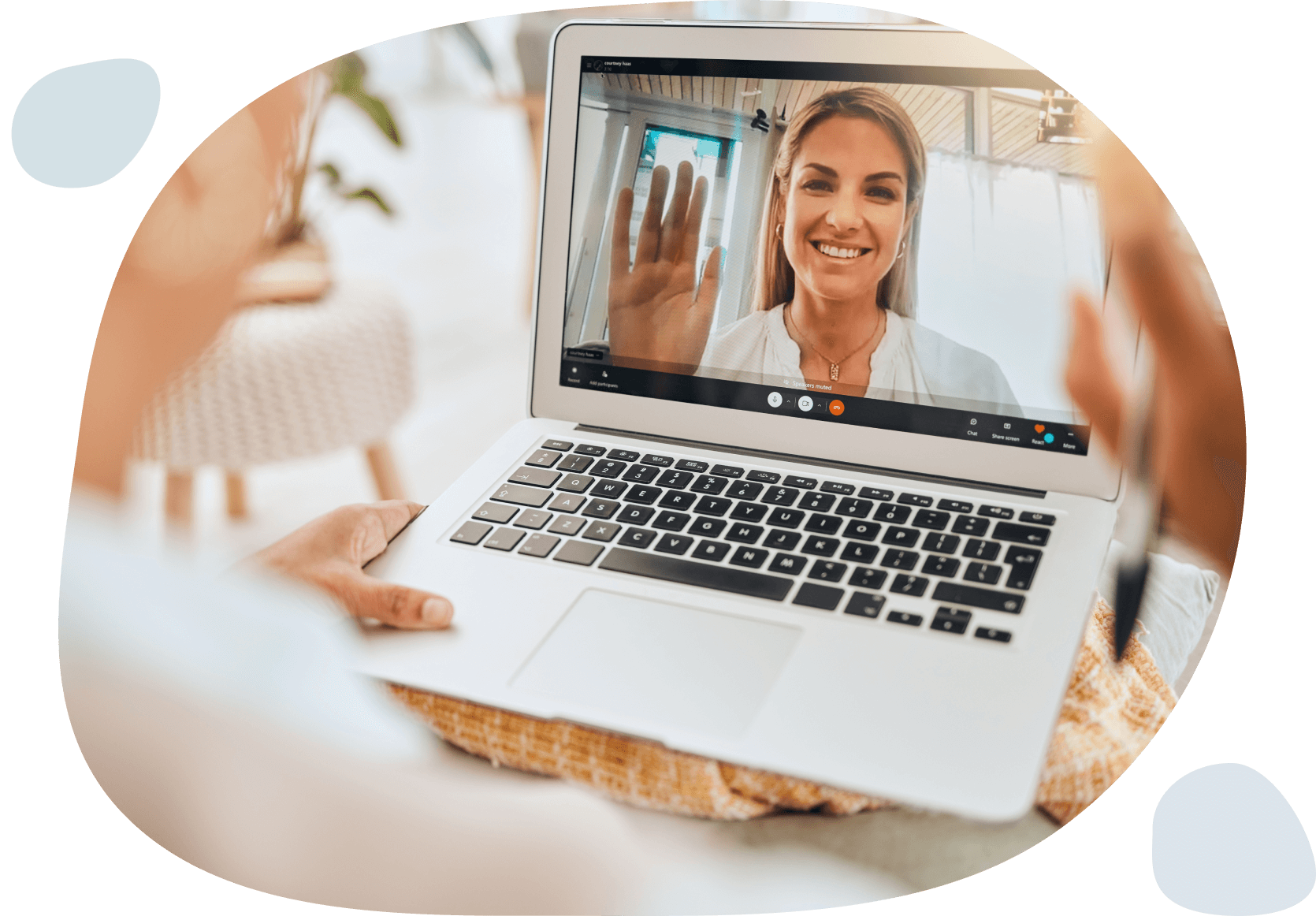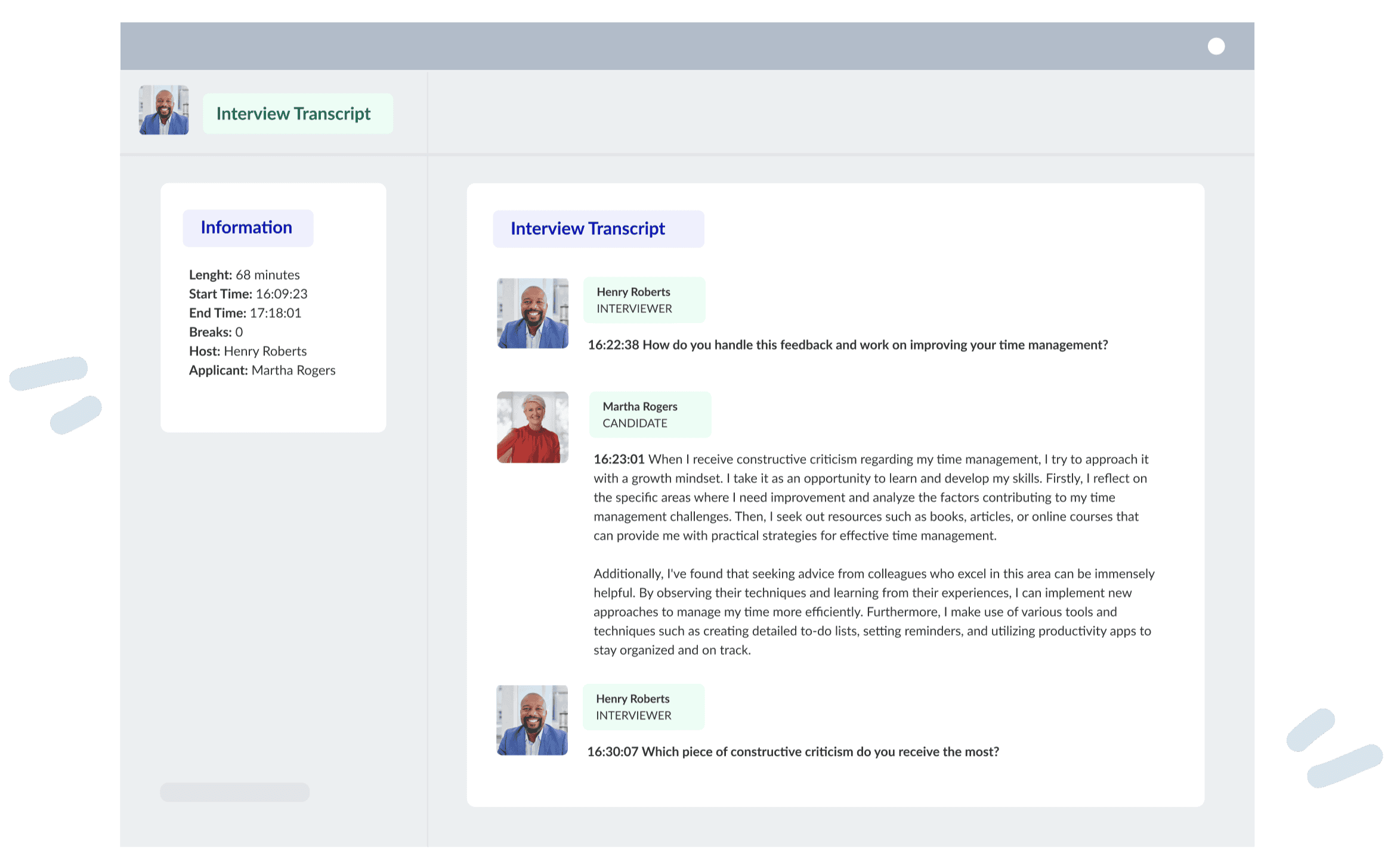
What is an Applicant Tracking System?
From job requisitions to offer letters, learn how an Applicant Tracking System can automate your hiring process.

Choosing the right interview type for each stage of your hiring process can enable the evaluation and overall process. The interview format is where and how the interview will take place. Interview structure is how standardized the process is on a spectrum. Interview type, format, and structure depend on your organization and the position you are hiring for.
According to the US Office of Personnel Management, the employment interview is the most widely used method of assessing job applicants. A job interview is an assessment or series of questions that helps an employer to determine if an applicant has the skills, competencies, and knowledge the role requires.
It all starts with deciding on the interview type, which depends on the hiring process steps, the organization, and the position. Interview formats generally fall into three categories: , in-person interviewing, and others (phone, chatbot). You can choose to conduct a structured interview, semi-structured interview, or unstructured interview. Keep in mind interview structure exists on a continuum, and it’s easy to think your process is more structured than it is.
A recruitment interview aims to collect candidate data to support the hiring decision. During a hiring interview, the interviewer(s) will take notes or evaluate the candidate(s) using a rating guide or interview scorecard. A hiring manager, recruiter, or HR professional oversees the interview process.
Here’s a simple way to differentiate between type, format, and structure:
Type = what kind of interview it is, and who will be present
Format = where and when the interview is taking place
Structure = how the interview will be structured

Many organizations manage hiring workflows using an applicant tracking system (ATS).
What is an ATS?
An Applicant Tracking System (ATS) collects and stores information on job seekers who apply to work at an organization. It’s a type of recruiting or HR technology that can perform some, all, or more of the following functions:
Every job interview is unique, and a single interview can contain multiple types. This is why two departments within the same organization can have totally different interviewing methods within a framework due to using or combining different interview types.
Find out how each interview type is defined, when you might use it, and why you’d choose it.
What does a typical interview process look like?
On average…
250
resumes are submitted for each corporate opening*
4-6
candidates get called for an interview*
2-3
interview rounds is a common length**
The following are the most common types of interviews used in hiring. They can be easily distinguished based on the number of interviewers, the position in the hiring process, and their primary function in a specific job competition.
A screening interview is a short interview used to determine if the applicant possesses the competencies necessary for the position you’re hiring for. It’s also known as an intake interview or first-round interview. Screening candidates is the first step in the interview process. It’s used to streamline the applicant pool so that only qualified applicants advance to the next interview stage.
Doing a phone interview with talent acquisition is a very common way to screen applicants, but live or pre-recorded video screening interviews are also becoming increasingly common, especially if the job is hybrid or remote. If the screening interview is synchronous, typically it would be done one-on-one to save resources.

A panel interview is when multiple people interview a single candidate simultaneously. Panel interviews can bring diverse interviewers into the hiring process, test for any type of candidate selection criteria, and are incredibly helpful for mitigating hiring biases.
Panel interviews are also great for efficiency and candidate experience. Panel interviews can replace multiple one-on-one interview steps, saving the interviewers and candidates time.

One-on-ones often come to mind when people think of job interviews because they consistently remain the most traditional type. This type is where an interviewer assesses candidates individually with the goal of shortlisting candidates. Often, this is where applicants meet hiring managers, and they start exploring fit from a knowledge, skills, and experience perspective.
One-on-one interviews are a great way to qualify applicants after screening and before a panel interview.

When are one-on-one interviews preferable to panel interviews?
According to CBS News, one-on-one job interviews offer two advantages over panel interviews:
A round-robin interview is when job candidates for a specific position interview with several people on the same day. Interviewers will see a steady stream of candidates back to back as they move from room to room (this could be virtually or in-person). Round-robin interviews are an efficient way to assess many candidates in an elapsed period of time, especially if combined with a structured interview style and a digital interview guide. The downside to this interview type is that the day can be long for interviewers.
This interview type is often used in hiring events and specialized higher education programs like medical residency placements or scholarships.

Group interviews bring all the candidates into a physical or virtual room with an interviewer or multiple interviewers. This interview type is used in high-volume hiring or recruiting situations for efficiency once employers have identified candidates who are qualified. Group interviews are beneficial because they allow you to see how applicants handle themselves interpersonally amongst people who could be peers.

Certain interview types are designed to assess candidates based on specific criteria that can reveal insights into their behavior, abilities, and experience. These interviews employ unique question styles to gain a comprehensive understanding of how candidates may perform in a specific role or scenario. Often, an interview process will contain components of each of the following interview types to varying degrees.
Situational interviews focus on figuring out how candidates will act in the future. The questions are about what the candidate would do in specific situations, and the assessment is based on their hypothetical behavior.
This type of interview can feel very similar to a job simulation since both test how employees would or could apply their existing skills on the job.
Here are some questions that could be asked in this type of interview:

Behavior-based interviewing focuses on how the candidate acted in the past as a way of making future predictions about their job performance. A behavior-based interview is really about drilling into examples of when a candidate used specific skills, knowledge, and abilities you are looking for to navigate past situations.
Here are examples of behavioral interviewing questions:

Competency-based interviews ask candidates to share stories of past experiences in order to evaluate their strengths and weaknesses and see how they pair up with the competencies required for the role. In this type of interview, the candidate’s answers are rated based on the reasoning or rationale that led them to their chosen course of action.
In order to be accurate, this type of interview needs to be informed by a job analysis so you can be sure the competencies you are assessing for are directly correlated with the role you’re hiring for.
Competency-based interviews are especially helpful for spotting people with leadership potential and assessing soft skills like critical thinking and teamwork.
How do you evaluate competencies? Here are some sample questions:

Some roles require a high level of technical skill, knowledge, or experience. Specific job interview types are often used to effectively assess candidates for these roles. These interview types aim to evaluate the candidate’s skills, experience, and technical abilities against the requirements for the role.
A job simulation, or a working interview, is an interview where potential employees complete tasks expected from them on the job. Candidates could be given assignments and asked to come prepared to present or discuss, or be asked to complete a task or assignment on the spot. Job simulations test for skills, which is a more effective way of predicting job performance according to a 1998 article in Psychological Bulletin.
For instance, a job simulation for a retail salesperson may involve assessing their interpersonal and sales skills, so the assignment during the interview may be to “sell” an item to the interviewer.

A case interview is a job interview where you present the applicant with a business scenario they must provide a solution to. Case interviews test candidates’ problem-solving abilities, analytical skills, and business acumen. This type of interview is prevalent in management consulting, finance, and other industries.
Here are some sample case interview questions:

A technical interview is typically conducted by a subject matter expert to assess the depth and breadth of the candidate’s industry knowledge. This type of skills assessment interview is common in developer and IT jobs where specific hard skills and certifications are required. A coding interview is classified as a technical interview, for example.
The interview format (i.e., video technical interview vs. technical phone interview) will entirely depend on the industry, employer, and role. It’s worth noting that because they are so involved, technical interviews can last up to 90 minutes or longer (Indeed).

Technical interviews are getting harder
Interviewing.io, a technical mock interview platform, reported in 2022 that for every 50,000 tech jobs lost, candidates need to perform about 3 percentiles higher in coding interviews. They hypothesize this is due to employers gaining leverage in the market.
While the article added the caveat that they don’t represent the whole market, and this information only reflects senior engineers, it’s a good reminder to put the candidates who are near misses in a talent pool to be nurtured. While they may not pass under the current conditions, that doesn’t mean they aren’t qualified and competent.
Like any business function, interviewing is susceptible to trends and innovation. While some have a proven record like the more traditional job interview methods, it is important to understand the utility of these interview types in a hiring process. Here are some interview types that are popular right now.
An informational interview isn’t actually a job interview — it’s more like networking. It’s a meeting initiated by a job seeker or someone looking to change jobs or careers to hear about the experiences of someone working in a field or company that interests them. This interview allows job seekers to build a relationship with the person they speak to, and collect practical information about a career path they are considering.

Blind job interviews remove select details like name, gender, school or university, race, address, ethnicity, or other information in the initial step or screening interview. Blind hiring, also known as anonymous hiring, aims to help interviewers make more objective decisions about a candidate’s suitability for a role, and reduce the risk of hiring bias affecting decision making. The easiest way to institute blind interviewing is to use an ATS that is capable of stripping out identifying information.
Blind interviewing can be controversial. Some argue that it creates opportunities for bias more than mitigates them. If you do choose to use blind interviewing, make sure you’re incorporating other interview types and closely following interview guides to minimize the potential impact of this interview type on the overall hiring process.

Recruiters and HR teams have more options for interview formats than ever before. With new technology making it easier to interview from afar, in-person and phone interviews are no longer the first option. Some companies are fully remote and looking to hire talent across the country, and others still have an office and are looking to find top talent locally.
No matter what interview format you choose for each stage of the process, there are two key things to keep in mind:
In this section, learn what to expect with each interview format and why you should use them.
The impact of interview format
Interview format can greatly change the process and candidate experience. Keeping the format as consistent as possible from candidate to candidate is incredibly important if you are trying to conduct inclusive and structured interviews because changing formats between candidates can introduce hiring biases.

An in-person interview is when the candidate meets the interviewer, or interviewers, at a designated location and at an agreed-upon time. If the organization has an office, the candidate will go there, but depending on the situation, it could also be a coffee shop or other public location.
It’s ideal to choose this interview format if you are trying to hire locally or if the position would require the employee to go into the office. Attending an in-person interview where the candidate will be working can help them decide if they are comfortable with the commute and office setup.
Is in-person interviewing still considered the gold standard?
A 2019 research article published in the Social Science Computer Review took on this question to see if other interview modes are inferior to in-person. The interviewers included in the study “were no less likely to rate a remote interview as excellent than an in-person interview, meaning telephone and online interviews can be productive and economically advantageous way to collect data.”
A digital in-person interview is when the interviewer and candidate are in the same location, at the same time, but without the paperwork. Everything from interview scheduling to rating is digitally enabled. During the interview, interviewers use a device to follow a structured digital interview guide with the questions and interview criteria they need to keep things consistent.
If you are ready to streamline your interview process, choose this interview format. It can reduce friction by helping coordinate interviews automatically, hold interviewers accountable, help with interview compliance, and sort and share evaluations in real-time.
What is an interview guide?
Think of an interview guide as a roadmap for the interview process. They are usually developed as part of a structured interview process and contain questions, rating-specific criteria, best practices, and details about the interview workflow. It can be a document or a digital workflow.
Live video interviewing is conducted in real-time online. Employers use secure video conferencing or video interviewing platforms to conduct and record the interview (with the participant’s consent) at an agreed-upon time. The same level of professional attire, mindfulness about body language, and preparation is required as an in-person interview, but live video interviews allow participants to attend from anywhere with a strong internet connection.
Video interviewing platforms help employers prioritize the candidate experience with built-in interview guides and rating tools to provide a more consistent and fair experience. Many online interview solutions generate some form of an interview record so you don’t have to rely on memory, and you can rewatch or reread the details. This feature is especially beneficial if there’s rater variance.

What is an interview transcript?
Interview transcription is a verbatim text reproduction of an interview conversation. Someone can transcribe during the interview, or you can use artificial intelligence or machine learning to generate a transcript after the fact. According to Verbit, a transcribed interview's biggest benefit is allowing interviewers to fully engage with the interviewee without distractions.

A pre-recorded interview can also be called an asynchronous video interview, on-demand video interview, or one-way video interview.
A one-way interview is the most flexible interview option. Candidates can record their interview and hiring managers can provide ratings when it works for them. An on-demand interview is also incredibly beneficial for delivering a structured interview format since all applicants have the same experience and time to complete each question.
Why do recruiters use virtual interviews?
Eco-friendly and cost-effective
Saves interviewers and candidates from either commuting or flying to attend the interview, and embraces paperless interviewing.
Convenient
Interviews can happen from almost any device, browser, or location with an internet connection.
Interview compliance
Thanks to digital interview guides, it’s much easier to maintain interview compliance.
Interview intelligence
Take advantage of artificial intelligence (AI), machine learning (ML), and automation to optimize a human-led structured interview process.
Interview transcription
Revisit details or information to support accurate rating.
Legal defensibility
Gives you the capacity to record and save interviews, which is beneficial for legal defensibility.
Hybrid interviewing is when some participants are in-person, and some are remote during an individual interview. The remote participants would either join using video conferencing or a video interviewing platform.
This is not to be confused with a hybrid recruiting process, where you’re using a combination of in-person and virtual interviewing depending on the step.
This can look like a candidate, or a group of candidates, joining remotely and the interviewer or panelists being physically present at the interview site. Another hybrid interview arrangement is having the candidate come to the office for a panel interview where some of the panelists are in-person, and some are joining using video. Hybrid interviewing showcases your flexibility as an employer and is a great way to preview a hybrid work environment (Tom Wood via LinkedIn).
A phone interview or phone screening is when a recruiter or interviewer calls an applicant for an interview. Ideally, the call is pre-scheduled over email or using scheduling software, but there are instances where applicants will receive a call out of the blue asking to book another time or asking if it’s an ok time to talk.
Phone interviews are a great early assessment tool to evaluate a candidate’s suitability for a job and a good way to save time by eliminating unqualified applicants.

Chatbot or text interviews involve a bot asking the candidate pre-determined questions in an established cadence and delivering predetermined responses as the candidate types their answers and moves through the interview. In this interview format, a chatbot is essentially replacing a human interviewer and delivering a structured interview experience.
Some chatbot or text interviews are entirely AI-led, where the AI is making unassisted decisions and eliminating or advancing candidates after the interview. Others are AI-enabled, where the AI is making recommendations to help humans move candidates forward or eliminate them after the interview.
This interview format is very new and growing in popularity due to the efficiency it offers, and may be useful in screening for entry-level positions. Compared to other interview formats, pre-recorded interviewing offers the same consistency and interview compliance benefits, but it doesn’t have the same risk as AI-led interviews because even with the addition of interview intelligence tools, pre-recorded interviewing is still a human-led process.
Challenges of chatbot interviewing
Chatbots won’t replace humans when it comes to interviewing just yet as they still come with several challenges (Forbes). Here’s why:
Interview structure, also referred to as interview style, dictates how prepared, consistent, and controlled an employment interview is.
Interviews range from structured to unstructured on a spectrum according to the level of constraints placed on the questions and evaluation criteria laid out in the interview guide. Each end of the spectrum has different characteristics, and it’s important to know where your interview lands so you can make an informed decision based on the benefits and risks that come with the level of structure you’ve chosen.
Structured
Semi-structured
Unstructured
Definition
A systematic and consistent process for interviewing job candidates.
A blend of structured and unstructured interview styles.
A type of job interview where the format, content, or process can change between candidates.
Level of formality
Formal interview
Semi-formal interview
Casual, might not feel like an interview
Interview guide
The interviewer closely follows an interview guide with rules for eliciting, observing, and evaluating responses.
The interviewer has a list of interview questions they use as a guide, but they are able to add in questions, rephrase them, or ask the questions in a different order.
The interviewer doesn’t use an interview guide. There are organizational policies but no interview protocols.
Level of preparation required
Highest level of preparation. Questions and rating scorecards are premeditated based on the job analysis and pre-vetted by I/O psychologists.
Some preparation. If it is used will depend on the interviewer and the situation.
No preparation. The interviewer tailors the questions based on the candidate. Their personal opinion often determines what is or isn’t a satisfactory response.
Leadership
The interviewer directs the conversation and keeps it on course.
The interviewer directs the interview but allows it to go off course if prompted by the candidate.
The interviewer does not direct the interview.
Interview stages and interviewers
Every candidate goes through the same interview process for a specific role. The same interviewer(s) conduct the interviews during all stages of the process.
Every candidate goes through the same interview process for a specific role, but the interview format or interviewer could change.
The interview process may not be the same for all candidates. The interviewer, and interview format or type will likely be different depending on the candidate.
Benefits
Structured interviews are easier for interviewers to follow, can be used to evaluate competencies that are difficult to measure using other assessment methods, and result in a more equitable process.
Semi-structured interviews offer structure and flexibility, and according to OPM, interviewers and applicants tend to prefer less structured formats.
Unstructured interviews flow like a conversation, require no preparation, and have a loose framework where the content is discretionary.
Reliability and validity*
Reliability: High
Validity: High
Reliability: Moderate
Validity: Moderate
Reliability: Low
Validity: Low
Drawbacks
Some find structured interviewing overly stiff or formal due to the rigidity of the process (which is what makes it effective).
All the downsides of unstructured interviewing without the full benefits of structured interviewing.
A high risk of bias can bring legal challenges. Also can result in assessing for cultural fit (subjective), versus a skills and competencies fit (objective).
*Reliability references the rating consistency among interviewers. Validity references the extent to which the assessment method measures what it is intended to.
Learn about the benefits of structured interviewing
Find out how a structured interview process can enhance your quality of hire →
There are a few common interview strategies candidates use to answer interview questions. While the use of these methods can demonstrate the candidate’s level of preparedness, they can also mean that the answers may be rehearsed or pre-planned. Across all types of response methods, there’s a single tool you can use to draw out more spontaneous responses: probing questions.
Probing questions are open-ended questions that encourage candidates to provide more context into the details of their answers. Probing questions can turn a vague interview into a successful interview by collecting a more optimal amount of information to make a decision.
Unlike prompting questions, probing questions can be created in advance and incorporated into a structured interview guide. Asking probing questions doesn’t mean that the answers the candidate provided aren’t valid or adequate — they’re just another way of collecting data to support the interview evaluation.
Your goal is to find the best person to do the job, not the person who’s best at memorizing interview answers, which is why genuine answers can make a big difference to hiring outcomes. Probing helps candidates show skills and thought processes and provides additional opportunities for candidates to showcase if they are the right fit for the job.
What if candidates leave out information?
Many candidates do not use any of the methods we are about to mention. If an applicant answers a question but leaves out key information like what they specifically contributed or what the result was, prepare general prompts for each question to get the full picture. For example:

Here are the most common answer methods candidates use. There are many commonalities between them, but each is slightly different. By preparing probing questions, you are anticipating in advance what candidates may get stuck on or where they may forget to paint a complete picture.
S.T.A.R. interview technique
You will most commonly receive STAR interview answers because they provide an exceptional level of detail. The STAR interview method describes the situation or context, the task that had to be accomplished, the action the candidate took to get it done, and the result of their efforts. This method will come up in almost any interview type except for a situational interview.
Probing questions for an answer like this should be focused on connecting the candidate’s actions to the end result.
Sample probing questions for STAR responses:
The PAR interview method can be used either to discuss past behavior or be used in response to a hypothetical question like in a situational or working interview. With PAR, it can be easy for the applicant to skip over the rationale around why they took the action they did, which is where the probing questions should be focused.
Sample probing questions for PAR responses:
BAR interview method is when candidates answer a question asking about past behavior by explaining the background of the situation, what action they took (individually or part of a team), and what the outcome was. Similar to PAR, with the BAR answer method you’ll want to probe to understand the why behind their behavior or decision.
Sample probing questions for BAR responses:
This method might be used in response to a question that is about a challenge the person faced, a major contribution they made, or a milestone they reached – this answer may feel more like a story in the way it’s told.
The probing questions for this type of answer should be focused on what they didn’t do, to help build the full picture of what options they had to weigh, information they did or didn’t have access to, and decisions they had to make.
Sample probing questions for CAR responses:
A meet the team interview is a blanket term to describe any interview where an applicant is meeting multiple people they would be working with. This is one of the final interviews applicants will do, and it will likely be a panel interview. The purpose of a meet the team interview is to observe how they interact with the other personalities on the team and give the candidate a chance to see how they feel about their future coworkers.
There are several factors that determine interview duration: what step in the process the candidate is in (the further the candidate is in the process, the longer the interview tends to be), the level of position, the interview guide, and the hiring manager’s schedule for the day. Keep in mind that if the interview is not structured the length will change from interview to interview.
Screening interviews can be anywhere from five to 30 minutes, whereas subsequent individual interviews can last anywhere from 45 to 90 minutes. According to Resume Target, “a 1-hour interview is a good sign for most career levels.”
Modernize your hiring process with expert insights and advice.